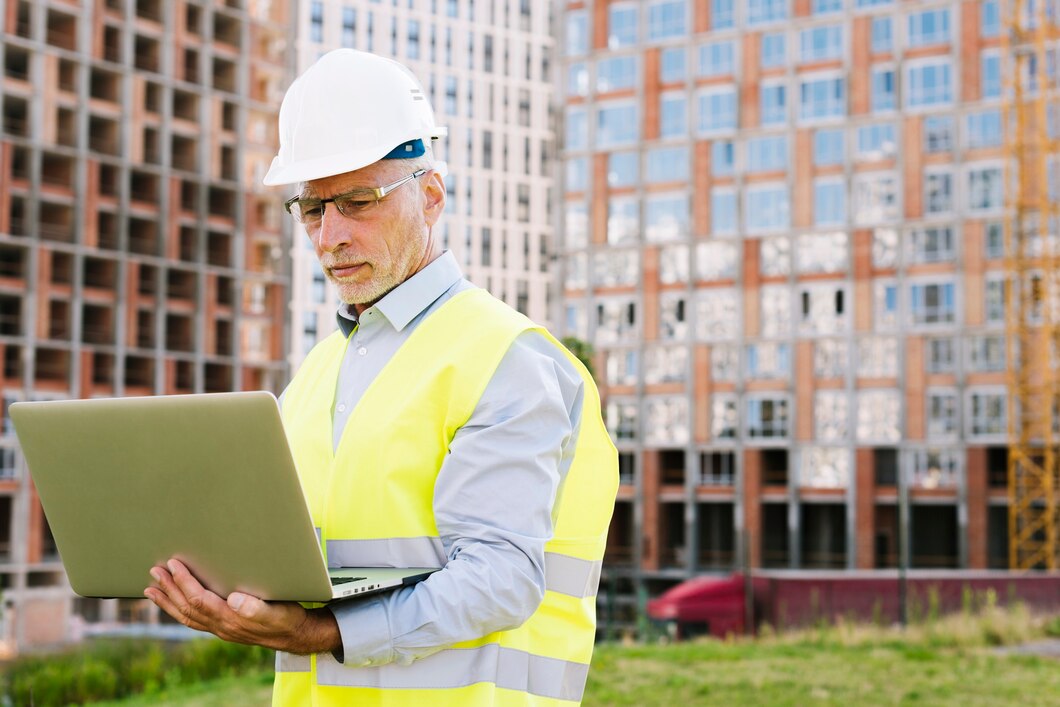
Industrial & Commercial Construction: Trends and Innovations in 2025
In 2025, the Industrial and Commercial Construction sector continues to thrive, with multifamily housing, healthcare, and hospitality leading the way in growth potential.
Modern technology determines how projects shape up from planning to operation with enhanced efficiency and precise execution.
The industry continues to find innovative solutions to solve ongoing labor shortages and price inflation challenges while embracing them. The architectural template for this year offers obstacles alongside efficient new methods for building.
In this blog, we’ll explore the key Industrial and commercial construction trends and innovations set to define the construction landscape in 2025 and beyond.
List of Top Industrial and Commercial Construction Trends in 2025
The Industrial and Commercial Construction is experiencing profound changes through emerging technologies that enhance project efficiency while promoting sustainability and safety standards. Here is an overview of the key trends expected to influence 2025 featuring practical real-world implementations.
1. The Expansion of Building Information Modeling (BIM)
Architects use Building Information Modeling (BIM) systems to transform their project planning as well as execution methods. A digital model that shows building features allows architects, along with engineers and contractors, to collaborate without interruptions.
The large project Industrial and Commercial Construction building through BIM to bring together real-time structural details with material usage and energy efficiency data. Improved coordination through this method helps detect design errors before the construction phase starts.
Impact:
- Early risk identification helps maximize accuracy in project development.
- Enhances collaboration between all stakeholders.
- Minimizes unnecessary materials while maximizing resource management
2. Virtual Construction: A More Efficient Planning Process
BIM integrates with AR and VR technology to develop complete virtual simulations that provide project previews before real-world construction activities start.
Before construction begins, healthcare professionals inspect planned hospital expansions in virtual space where they can identify workflow enhancements through physical walkthroughs.
Impact:
- Detecting design problems in advance helps avoid expensive adjustments to the construction plan.
- Detailed project visualizations generate enhanced stakeholder relationship strength.
- Virtual testing allows project staff to examine diverse layout designs, which leads to more efficient operations.
3. Robotics and Automation Reshaping Job Sites
Modern construction sites benefit from automated systems and robotic tools which boost operational safety alongside enhanced productivity throughout diverse operations. The integration of these technologies reduces human error, manual labor requirements across bricklaying operations, site inspections, and material transportation.
Example: Machines operate autonomously to perform excavation and foundation operations which deliver faster output with higher precision when compared to conventional techniques. Robotic arms perform repetitive tasks of welding and assembly while they boost productivity levels simultaneously.
Impact:
- Automated systems lower operational costs because they require less manual workforce.
- Safety conditions improve because hazardous tasks require less human contact.
- More efficient construction schedules lead to reduced total project expenditures.
4. 3D Printing: Revolutionizing Construction Speed and Cost
The Industrial and Commercial Construction industry adopts 3D printing technology to build components and structures faster and economically. The process enables builders to perform exact on-site construction without unnecessary waste of building materials.
Example: An onsite 3D printer produces modular office structures making it possible to generate customized designs through digital models. Using 3D printing leads to substantially lower labor expenses and shorter Industrial and Commercial Construction durations as opposed to conventional construction practices.
Impact:
- The process cuts down raw material use while upholding sustainable construction practices.
- Industrial and Commercial Construction projects finish faster when designers employ prefabricated components.
- Complex geometric shapes that defy conventional building techniques can now be built because of this technology.
5. Smart Buildings and Connected Infrastructure
The development of smart buildings changes the fundamental approach to designing and controlling Industrial and Commercial Construction real estate. These structures combine Internet of Things (IoT) sensors and automation systems, data analytics, to optimize their energy usage, security, and maintenance functions.
Example: A high-rise building with a smart design features automatic operations for lights, heating, and ventilation to respond to occupancy, which leads to reduced energy usage.
Impact:
- Improves energy efficiency and sustainability.
- Building automation systems improve comfort levels for occupants by adjusting settings specifically for them.
- Leveraging predictive maintenance techniques helps organizations lower their long-term maintenance expenses.
6. Safety Innovations: Protecting Workers with Advanced Technology
Construction site safety improvements now reach peak levels because technology focuses on protecting workers. Wearable devices combined with AI-driven monitoring technology and automated safety checks help reduce accidents and enhance site security practices.
Example: Smart helmets worn by workers include sensors which track their fatigue state alongside detecting environmental risks facing them on the job. High-rise inspections benefit from drone use, which eliminates the necessity of dangerous manual assessments.
Impact:
- Real-time hazard detection features help prevent accidents in work environments.
- Enhances safety compliance and monitoring.
- Effective safety protocols protect people from unsafe situations which could put their health at risk.
7. The Evolution of the Construction Workforce
Construction firms fight labor shortages and skill deficits through the adoption of digital tools and specialized training, which enables worker reskilling and upskilling. The application of virtual reality (VR) and augmented reality (AR) technologies enables workers to develop essential job skills in virtual training environments without endangering actual Industrial and Commercial Construction sites.
Example:
The company builds a virtual reality training system for crane operators to practice moving heavy equipment through simulated virtual environments. Virtual training through this method minimizes operational mistakes and incidents when personnel handle actual equipment. The use of drones allows site assessments which replace the requirement of manual inspections in dangerous conditions.
Impact:
- Virtual training environments enable worker safety through risk-free training experiences.
- Automation addresses labor shortages by executing repetitive, along with physically demanding tasks.
- Project efficiency increases because workers can learn specialized skills at a faster rate.
8. Modular and Prefabricated Construction: Speeding Up Project Delivery
Builders are changing the future of building design through the adoption of both modular and prefabricated construction techniques. The process of modular Industrial and Commercial Construction consists of manufacturing project elements in a separate location followed by site assembly. Prefabrication builds sections like walls, floors, and ceilings completely before transporting them to construction sites.
Example:
A hotel chain uses factory-built room units that operators transport to building sites for quick installation. The technique enables fast construction timelines and preserves rigorous quality standards.
Impact:
- Concurrent execution of site preparation and manufacturing processes accelerates project timelines.
- Better quality control and reduced material waste become possible through factory implementation.
- Specialized machinery operating within controlled environments helps decrease labor expenses.
9. Sustainability and Green Building Practices
Industrial and Commercial Construction operates under strong sustainability principles as builders strive to reduce carbon footprints and optimize energy use while minimizing environmental effects. Real-time monitoring lets smart energy systems automatically control heating and cooling systems according to building occupancy and external weather factors.
Modern construction now typically includes renewable energy systems together with high-performance insulation materials and environmentally friendly materials standards.
Example:
The combination of solar panels with smart HVAC systems and rainwater harvesting at an office building minimizes exterior resource needs. The construction employs recycled steel together with low-carbon concrete for reducing environmental effects.
Impact:
- New technology allows buildings to reduce power usage, which decreases expenses over time.
- Promotes environmentally responsible construction practices.
- The design makes buildings more efficient while giving them a stronger ability to withstand climate-related issues.
Wrapping Up
At Total Mobile Restoration, we know that the commercial construction world is changing very quickly, with the year 2025 being a turning point. As trends in the Industrial and Commercial Construction continue to transform the way projects are designed and built, we are dedicated to incorporating innovative solutions that make it more efficient, durable, and environmentally friendly.
If you’re ready to get ahead of the curve, Total Mobile Restoration is here to assist. Get in touch with us today to learn how we can bring these revolutionary strategies to your next project and create a smarter, stronger, and more sustainable future together.





Permalink